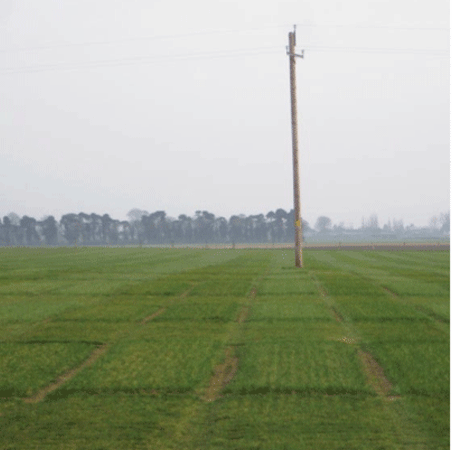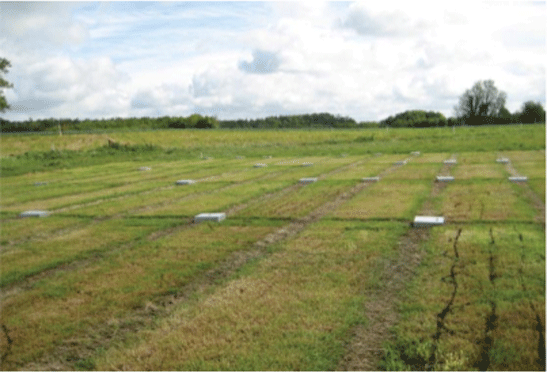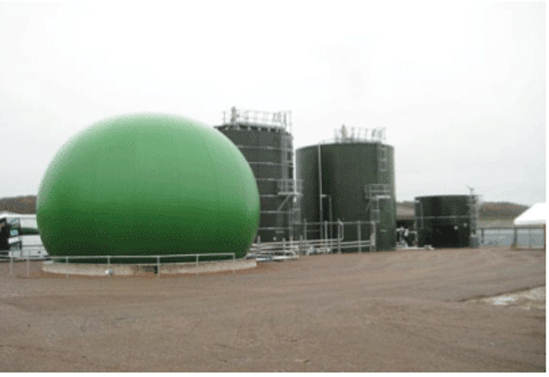



Grass To Energy And Back Again
Researchers at Teagasc Crops, Environment and Land Use Research Centre have been looking at using waste from anaerobic digesters as a fertiliser.In Ireland today, in excess of 90 per cent of energy is imported. This imported energy is primarily fossil fuel, which is responsible for most of Ireland’s greenhouse gas (GHG) emissions. In contrast, most Irish agricultural produce is exported, although some farmers are now considering alternatives to food production as a result of falling farm incomes. One popular alternative is farm energy production, e.g., by growing energy crops. Producing renewable energy within Ireland reduces our dependency on foreign imports and also reduces our GHG emissions.
Renewable energy from anaerobic digestion
Anaerobic digestion offers one possible way of generating renewable energy. This energy conversion technology converts waste material (such as slurries and manures) or energy crops (such as grass and maize) into biogas and a nutrient-rich waste material called digestate. Over 4,000 on-farm anaerobic digesters already operate in Germany, supplying renewable electricity to the German grid. Ireland’s predominantly grass-based farming system produces considerable quantities of slurries and manures, from which energy could be extracted by anaerobic digestion. Grass also represents an excellent feedstock for anaerobic digesters, and can be harvested and stored using existing equipment and know-how.
Two projects are currently investigating the use of grass as a feedstock for anaerobic digesters in Ireland. The Greengrass project is co-ordinated by Teagasc’s Animal & Grassland Research and Innovation Centre, Grange, with partners at University College Cork and Queen’s University Belfast, and is investigating the extraction of energy and industrial products from grass. The Bio-GrAss project, which includes Teagasc’s Crops, Environment and Land Use Research Centre, Oak Park, is led by University College Dublin and is investigating the GHG balance of grass-to-energy conversion. In the Bio-GrAss project, Teagasc is primarily involved in quantifying the fertiliser value and the GHG emissions of digestate as a fertiliser.

Digestate
The anaerobic digestion process converts carbon in the feedstock to biogas, which can subsequently be combusted to generate heat and electricity. This conversion process is carried out by bacteria, which convert more complex carbon compounds into simpler compounds. The process also releases nutrient elements previously bound up in complex organic compounds and thus unavailable for plant uptake when material such as slurry is used as a fertiliser. Thus, the anaerobic digestion process not only produces a nutrient-rich waste material that can be used as a fertiliser, but nutrient availability in the waste material is higher than in the original feedstock. In cases where grass is used as a feedstock, digestate from the anaerobic digester can be returned to the grassland as a fertiliser, thus completing the cycle. There are two principal advantages to using digestate as a fertiliser. The first advantage is economic, as the cost of grass production is minimised because the cost of chemical fertiliser is eliminated or reduced. The question in this context is: what is the fertiliser value of digestate and how does it compare with chemical fertilisers?
GHG emissions from grassland
Apart from the agronomic advantages of closing the nutrient cycle and reducing costs, the second main advantage of using digestate as a fertiliser is that it has the potential for considerable savings in the GHG emissions from grass production. Considerable quantities of GHGs are released during the manufacture of nitrogenous fertiliser; these emissions are avoided when digestate is used as a fertiliser instead of chemical fertilisers. However, the effect of digestate on the nutrient cycle in the soil and GHG emissions thereof is not clear. While areas under grass are generally considered to be a net sink for atmospheric carbon dioxide (CO2) until the soil is saturated with carbon, grasslands can also emit other GHGs like nitrous oxide (N2O) and methane (CH4). Emissions of N2O are of particular concern, as this gas is 298 times more powerful in contributing to global warming than CO2. Therefore, N2O emissions during fertiliser applications are highly significant in GHG terms. Rewetting of dry soil, as well as freezing and thawing, have been identified as further events with potential for large N2O emissions. CH4is another important agricultural GHG. Its global warming potential is 25 times that of CO2. Agricultural soils, on the other hand, may act as net sinks for CH4. The sink function is due to the oxidation of CH4to CO2by methanotrophic microorganisms in the soil, and has been reported to be greater for grassland than for arable soils. How does the use of digestate as a fertiliser affect GHG emissions from grasslands? This was another question that we wanted to answer.


Our experiment
In order to quantify the fertiliser value of digestate and the GHG emissions arising from digestate application, we applied different quantities of digestate (thus different quantities of nitrogen [N]) to grass plots. Equivalent quantities of N fertiliser were also applied – either as calcium ammonium nitrate (CAN) or as urea. We applied digestate and fertiliser in three increments during each growing season, and measured GHG emissions before each application and for a long period after each application.
What we found
- Grass yield response to digestate as a source of N was similar to, though slightly lower than, that of chemical fertiliser.
- GHG emissions: There were no significant emission peaks that were not connected to fertiliser application, indicating that factors such as drying- wetting and freezing-thawing may be less important in Ireland compared to other countries. GHG emissions varied with year (i.e., meteorological conditions), as well as with fertiliser type.
- Fertiliser applications were followed by distinct GHG emission peaks, which declined over time. Emissions from CAN were almost ten times higher than from urea. Total GHG emissions from digestate application were lower than those from CAN but higher than those from urea.
- CH 4fluxes: A small uptake of atmospheric CH4occurred in plots that received chemical fertilisers. Emissions of CH4were high in plots that received digestate due to CH4from the digestion process that was dissolved in the digestate. However, this peak decreased quickly and plots that received digestate became a sink for atmospheric CH4a few days after digestate application.
Benefits to industry
We found digestate from anaerobic digesters to be an effective N fertiliser, offering a similar N response to that of common chemical fertiliser. GHG emissions in the field from digestate were lower than for some types of chemical fertiliser but higher than others. However, a proportion of the GHG emissions after digestate application were attributable to dissolved CH4, the main component of biogas, which is subsequently converted to energy. Thus, the GHG balance following digestate application can be improved by more efficient removal of CH4from the digestate, which will also improve the energy yield from the anaerobic digester. Anaerobic digestion can turn waste products and energy crops into a fertiliser, as well as providing a renewable energy stream. The cycle is thus closed and nothing is wasted from the process. The use of this proven technology and its products thus becomes more attractive as Ireland moves towards a sustainable economy in which both fossil energy imports and GHG emissions are minimised. This research was funded by the Department of Agriculture, Fisheries and Food’s Research Stimulus Fund (Greengrass and Bio-GrAss projects).
June 2011

